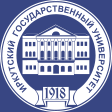List of issues > Series «Political Science and Religion Studies». 2025. Vol 53
The Image of the Ruler as a “Figure of Memory”:
Genghis Khan and Amir Timur
Author(s)
Abstract
This article explores the transformation of the images of two great rulers, Genghis Khan
and Amir Timur, in the historical memory of post-socialist Mongolia and Uzbekistan. It analyzes
how these figures are employed by contemporary states in the processes of nation-building and the
construction of political legitimacy. Using a comparative approach within the logic of «most different cases», the study identifies parallels between two culturally and historically distinct countries
that, in the context of redefined identities following the collapse of the USSR, adopt similar strategies of sacralizing the historical past. In Mongolia, Genghis Khan is portrayed as the spiritual founder of the nation and a symbol of cultural and political continuity, while in Uzbekistan, Amir Timur is
represented as the architect of imperial power and international influence. The study draws on diverse empirical materials – including museums, monuments, textbooks, academic and official publications – to demonstrate the institutionalization of personality cults in educational, cultural, and state
policies. Through the images of these rulers, mass perceptions of national identity, social unity, and
historical greatness are shaped, turning memory politics into an effective tool for both internal and
external legitimation of power.
About the Authors
Dyachenko Natalia Vladimirovna,
Сandidate of Sciences (History), Associate
Professor Department of General History.
Altai State Pedagogical University
55, Molodezhnaya St., Barnaul, 656031,
Russian Federation
e-mail: natalia-dyachenko79@yandex.ru
For citation
Dyachenko N.V. The Image of the Ruler as a “Figure of Memory”: Genghis Khan and Amir Timur. The Bulletin of
Irkutsk State University. Series Political Science and Religion Studies, 2025, vol. 53, pp. 80-91. https://doi.org/10.26516/2073-3380.2025.53.80 (in Russian)
Keywords
politics of memory, Genghis Khan, Amir Timur, Mongolia, Uzbekistan.
UDC
342.511:94(517+575.2)
DOI
https://doi.org/10.26516/2073-3380.2025.53.80
References
- Assmann J. Kulturnaja pamjat: pismo, pamjat o proshlom i politicheskaja identichnost v vysokih kulturah drevnosti [Cultural Memory: Writing, Memory of the Past and Political Identity in the High Cultures of Antiquity]. Moscow, Languages of Slavic Culture Publ., 2004, 368 p. (in Russian)
- Bazarov B.V., Nyam-Osor N. Iz istorii simvoliki i atributiki mongol'skoj gosudarstvennosti [On the History of Symbolism and Attributes of Mongolian Statehood]. Etnograficheskoe obozrenie [Ethnographic Review], 2003, no. 2, p. 62-68. (in Russian)
- Dyachenko N.V. Nacionalnoe i kulturnoe nasledie v kontekste politiki pamjati v Respublike Altaj i Mongolii [National and Cultural Heritage in the Context of Memory Policy in the Altai Republic and Mongolia]. Izvestiya Vostochnogo instituta [Bulletin of the Oriental Institute], 2023, no. 3, pp. 48-59. https://doi.org/10.24866/2542-1611/2023-3/48-59 (in Russian)
- Askarov A. (ed.). Istorija narodov Uzbekistana. Vol. 1 [History of the Peoples of Uzbekistan]. Tashkent, Academy of MVD Resp. Uzbekistan Publ., 1992, 182 p. (in Russian).
- Arifdzhanov E. K., Alimov Sh. K., Narbekov A.V., Kadyrov K.B. Istorija Uzbekistana [History of Uzbekistan: Course of Lectures]. Tashkent, Academy of MVD Resp. Uzbekistan Publ., 2012, 273 p. (in Russian)
- Mukhammedzhanov A. Istorija Uzbekistana [History of Uzbekistan]. Textbook for 7th Grade. Tashkent, Sharq Publ., 2017, 160 p. (in Russian)
- Alimova D.A., Rtveladze E.V. (eds.). Ocherki po istorii gosudarstvennosti Uzbekistana [Essays on the History of Statehood in Uzbekistan]. Tashkent, Shark Publ., 2001, 208 p. (in Russian)
- Shmyt A.S. Kult Chingishana v period Mongolskoj Narodnoj Respubliki i v sovremennyj period kak jelement nacionalnoj identichnosti mongolov [The Cult of Genghis Khan During the Mongolian People's Republic and in the Modern Period as an Element of Mongolian National Identity]. Mir nauki, kultury, obrazovaniya [World of Science, Culture, Education], 2014, no. 4 (47), pp. 307-310. (in Russian)
- Shcherbanova E.E. Politika pamjati v postsocialisticheskoj Mongolii kak instrument formirovanija imidzha gosudarstva [Memory Politics in Post-Socialist Mongolia as a Tool for Constructing the State Image]. Altajskoj shkoly politicheskih issledovanij [Diary of the Altai School of Political Studies], 2022, no. 38, pp. 109–118. (in Russian)
- Bulag U. Collaborative Nationalism: The Politics of Friendship on China's Mongolian Frontier. Lanham, Md., Rowman & Littlefield, 2010, 281 p.
- Kaplonski C. The Case of the Disappearing Chinggis Khaan. Ab Imperi, 2005, no. 4, pp. 147-173.
- Bernhard M., Kubik J. (eds.). Twenty Years After Communism: The Politics of Memory and Commemoration. N.Y., Oxford Univ. press, 2014, 362 p.
- Mongol Ulsyn Tuukh. Vol. 2 (Mid-12th – Mid-14th Centuries). Ulaanbaatar, 2003, 412 х. (in Mongolian)


